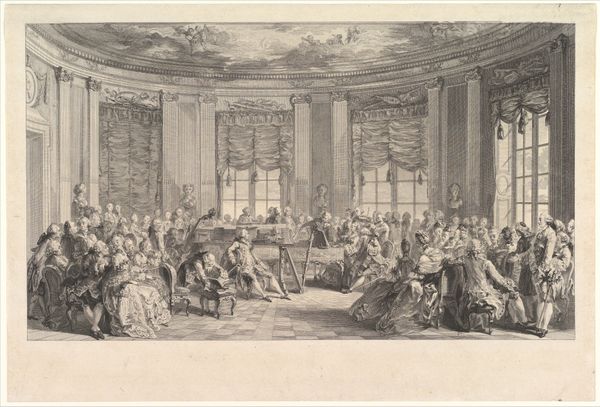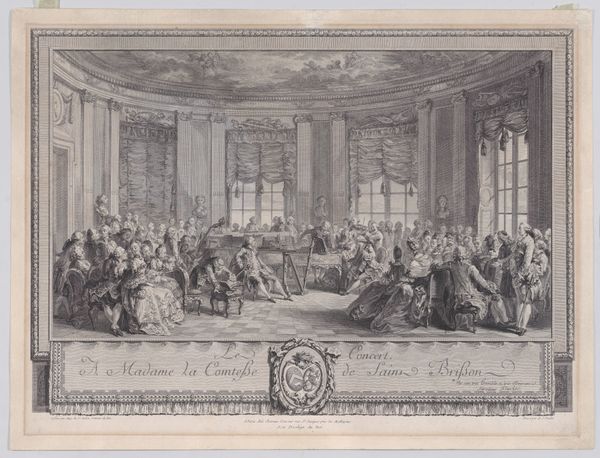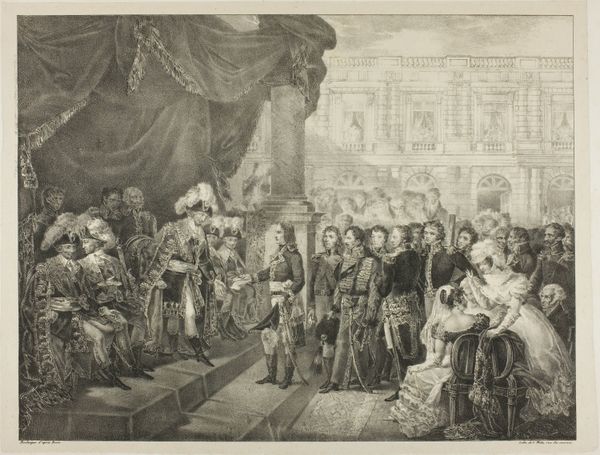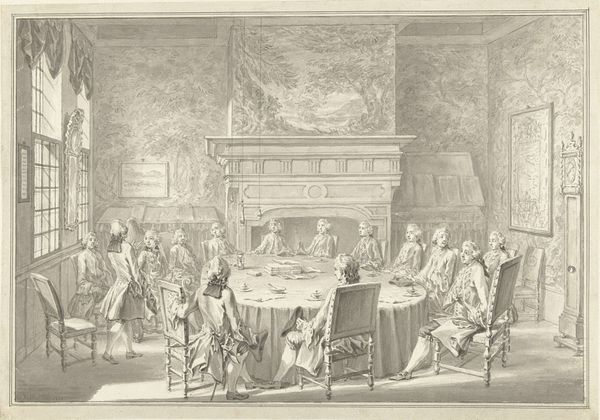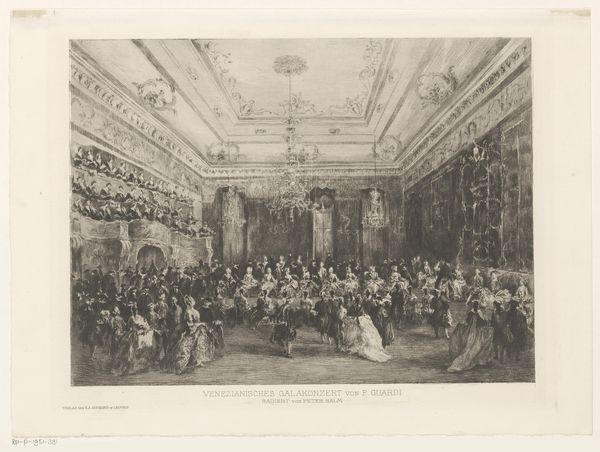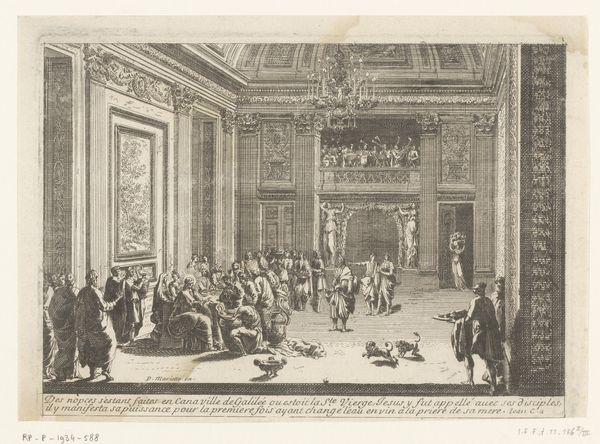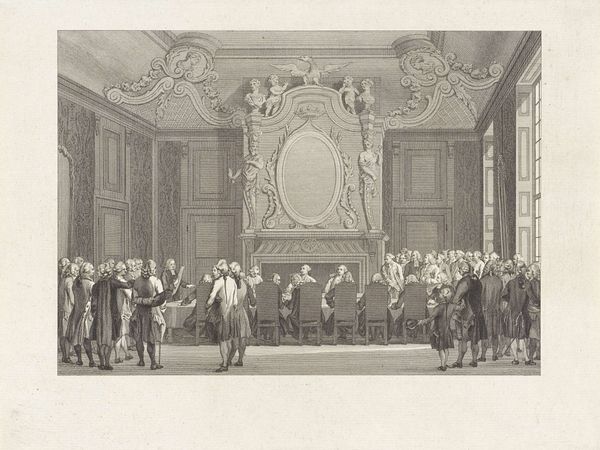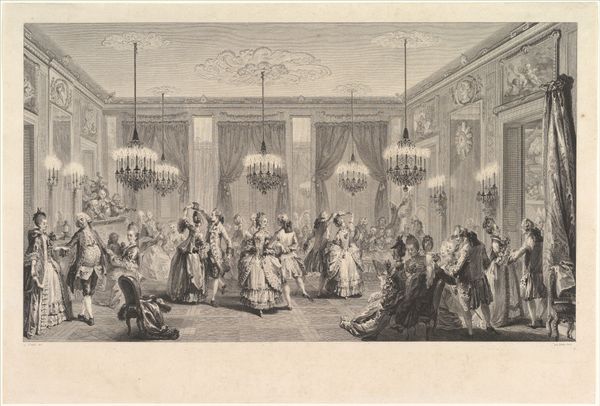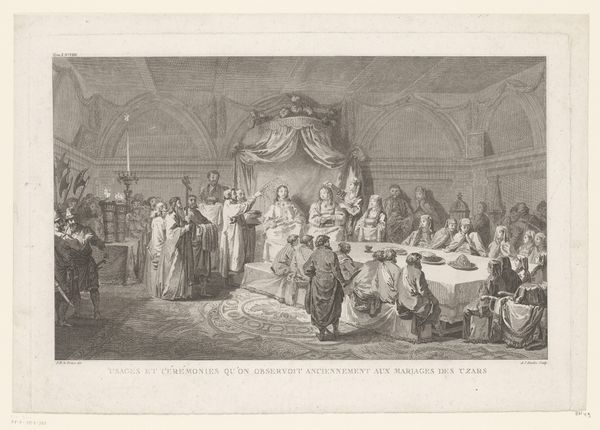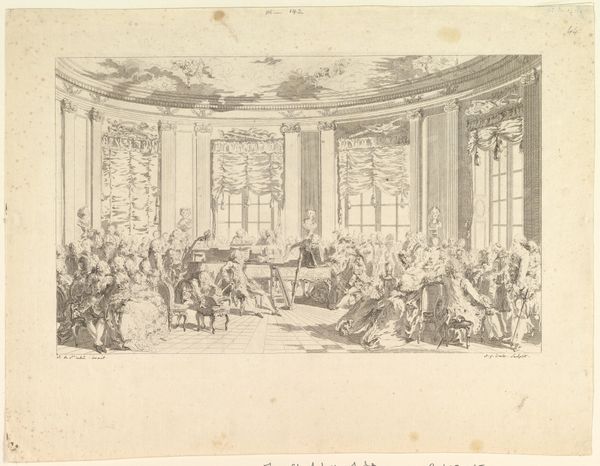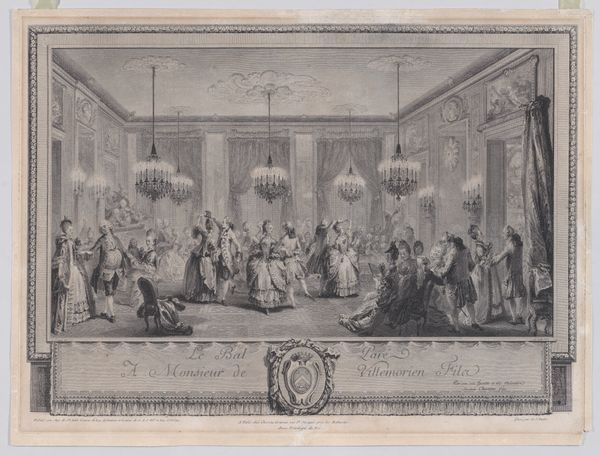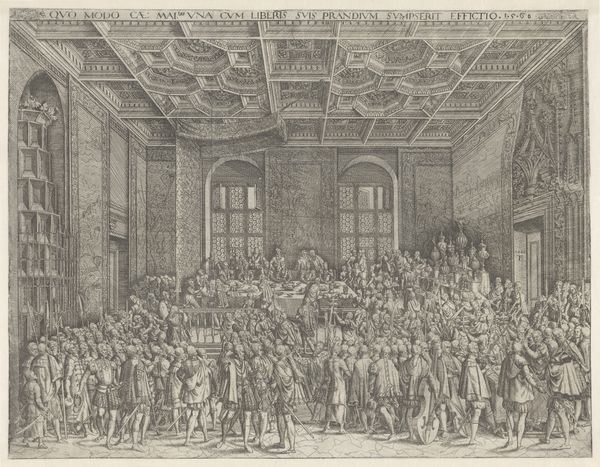
drawing, print, photography, ink, engraving
#
drawing
#
light pencil work
#
narrative-art
#
mechanical pen drawing
# print
#
pen sketch
#
pencil sketch
#
old engraving style
#
photography
#
personal sketchbook
#
ink
#
sketchwork
#
pen-ink sketch
#
pen work
#
pencil work
#
genre-painting
#
academic-art
#
engraving
#
realism
Dimensions: height 243 mm, width 344 mm
Copyright: Rijks Museum: Open Domain
Curator: Here we have "Doop van prins Boudewijn, 1869," an engraving capturing the christening of Prince Baudouin. Look closely; it’s a detailed scene of the Belgian royal court. Editor: Immediately, I'm struck by the formality and order. The composition leads the eye to the central figures of the ceremony but overall the even tonality and high detail present the even-handed chronicling of all in attendance. Curator: Exactly. This event was more than just a religious sacrament. It served as a crucial moment to reinforce the monarchy's legitimacy and solidify dynastic succession. Note the careful rendering of the interior setting, reflecting the power and prestige associated with the family. The depiction here reinforces political ideas. Editor: Observe the way the artist handles the fabrics and textures, specifically in the ladies dresses. There is a level of intricacy in how the light defines them suggesting careful study and attention to the surface. How much of this detail do you think was aimed toward communicating status and luxury? Curator: Certainly some but there is so much more to see. The very act of commissioning and distributing such images—which often happened through popular periodicals—demonstrated how monarchies were attempting to connect with and impress the public. Editor: Despite the apparent precision in details of dress and the implied grandeur of the occasion, the use of line feels hurried. Would you attribute this to limitations imposed by medium? Or do you believe there is symbolic consideration regarding mark making within similar works? Curator: More the practical considerations and demands involved in creating images for wide circulation. Also keep in mind, what seems rushed now was very skillful at the time. Beyond line quality, let us not discount the ways visual representations worked as propaganda—a tool to shape and spread national identities, projecting particular moral codes. Editor: So, looking at this scene through your lens, what are the main arguments this image promotes to the masses? Curator: Images such as this served to stabilize and ensure that people at the time had something tangible to connect them to those figures they may never meet in their lifetime. Editor: Indeed. I was at first caught by its formalism. Now, having seen the wider view you propose I can feel a bit of what this must have represented at the time of its creation.
Comments
No comments
Be the first to comment and join the conversation on the ultimate creative platform.
